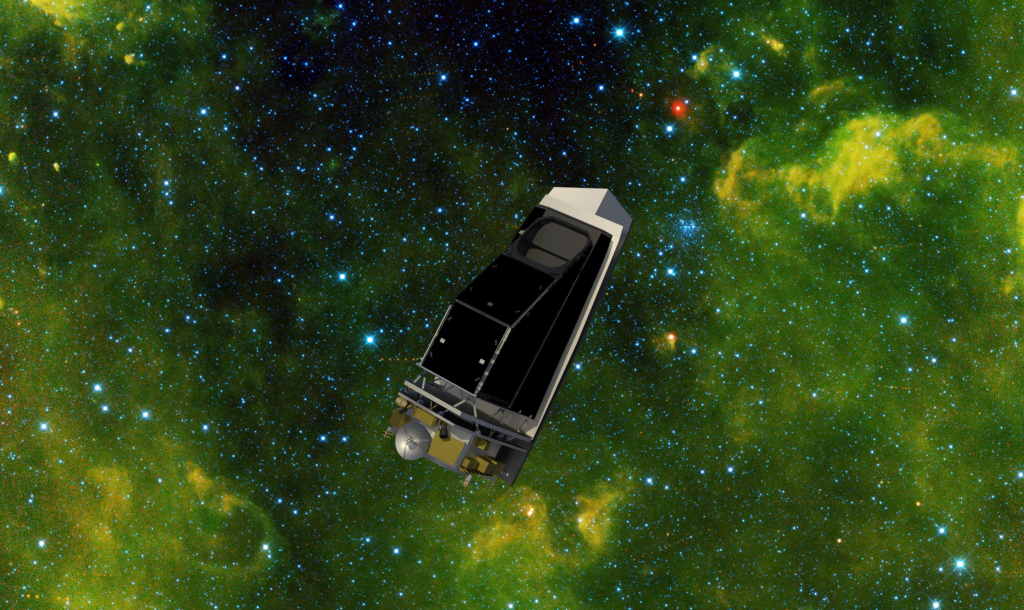NASA’s NEOWISE mission, known for its extensive work in detecting asteroids, has officially concluded. After over 10 years of service, the infrared space telescope sent its final data back to Earth before the team at NASA’s Jet Propulsion Laboratory (JPL) turned off its transmitter, marking the end of an era in planetary defense.
The NEOWISE mission played a crucial role in identifying asteroids and comets, some of which posed potential threats to Earth. This effort was part of NASA’s broader initiative to safeguard our planet from cosmic hazards.

On its last operational day, engineers at JPL commanded the spacecraft to deactivate its transmitter. This significant event took place at the Earth Orbiting Missions Operation Center in Southern California, with a diverse group of mission team members, both past and present, in attendance. NASA’s Tracking and Data Relay Satellite System facilitated the final transmission, bringing NEOWISE’s journey to a close. Although the mission has ended, its impact on our understanding of near-Earth objects (NEOs) will be felt for years to come.
A Legacy of Success
The NEOWISE mission has been hailed as a resounding success. According to Nicola Fox, associate administrator of the Science Mission Directorate at NASA Headquarters, “NEOWISE has significantly advanced our knowledge of the universe, particularly in tracking asteroids and comets that could be hazardous to Earth.” Although the mission’s end brings some sadness, it also paves the way for future scientific discoveries in planetary defense.

NEOWISE’s decommissioning was necessitated by its declining orbit around Earth. With increased solar activity heating the upper atmosphere, the spacecraft experienced greater drag, leading to its eventual fall from orbit. Without a propulsion system to correct its trajectory, NEOWISE is expected to safely burn up in Earth’s atmosphere by late 2024.
Two Missions in One
NEOWISE began its journey as the WISE (Wide-field Infrared Survey Explorer) mission, launching in December 2009. The initial mission was to scan the entire infrared sky over seven months, which it completed with unprecedented sensitivity. However, by July 2010, the telescope exhausted its coolant, which was crucial for minimizing interference from the spacecraft’s own heat during infrared observations. This limited its ability to observe the faintest infrared objects.

Despite this setback, NASA extended the mission under the name NEOWISE to focus on surveying main belt asteroids. The spacecraft continued to operate until February 2011, after which it was put into hibernation. In 2013, NASA reactivated NEOWISE under the Near-Earth Object Observations Program, a precursor to the Planetary Defense Coordination Office, to continue its vital work in planetary defense.
Unparalleled Achievements
Throughout its operational life, NEOWISE exceeded expectations. Laurie Leshin, director of NASA JPL, emphasized the mission’s importance, stating that “NEOWISE has been instrumental in mapping the skies and enhancing our understanding of the near-Earth environment.” The mission’s legacy includes creating all-sky maps with 1.45 million infrared measurements of over 44,000 solar system objects.
Among the more than 3,000 near-Earth objects (NEOs) it detected, 215 were first discovered by NEOWISE. Additionally, the mission identified 25 new comets, including the notable comet C/2020 F3 NEOWISE, which captivated skywatchers in the summer of 2020.
Preparing for the Future
NEOWISE not only left behind a wealth of data but also laid the groundwork for NASA’s next-generation infrared space telescope, NEO Surveyor. This upcoming mission, managed by JPL, aims to detect some of the most challenging near-Earth objects, such as dark asteroids and comets that do not reflect much visible light. NEO Surveyor will enhance the capabilities of the global planetary defense community, complementing NASA-funded ground surveys. The telescope’s launch is scheduled for no earlier than 2027.

Amy Mainzer, the principal investigator for both NEOWISE and NEO Surveyor at UCLA, highlighted the mission’s enduring impact: “The NEOWISE mission has provided a unique, long-duration dataset of the infrared sky that will benefit scientists for decades to come. It also helped lay the foundation for NASA’s next planetary defense infrared space telescope.”
Continuing the Mission
The NEOWISE and NEO Surveyor missions align with the goals of NASA’s Planetary Defense Coordination Office. Established under the NASA Authorization Act of 2005, this office aims to discover and characterize at least 90% of near-Earth objects larger than 460 feet (140 meters) across that pass within 30 million miles (48 million kilometers) of Earth’s orbit. These objects, if they were to impact Earth, could cause significant regional damage or worse.
Managed by NASA JPL, the NEOWISE mission has left a lasting legacy in planetary defense. The data gathered by NEOWISE will continue to support ongoing efforts to protect our planet from cosmic threats, ensuring that the mission’s contributions will not be forgotten.








